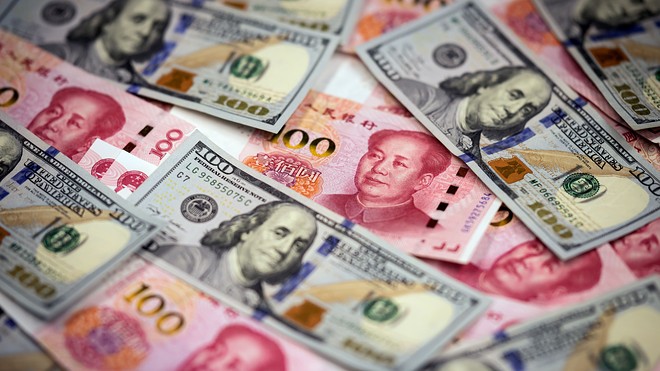Pakistan has agreed to pursue the rollover of a $3 billion Chinese trade finance facility that it has actually used to repay maturing debt, and when the facility expires after six months, it is not in a financial position to return the capital.
In the additional trade finance facility available under the China-Pakistan currency swap agreement, the State Bank of Pakistan (SBP) has completely tapped the $3 billion or 20 billion Chinese yuan indicated by the SBP’s financial accounts for fiscal year 2019-20.
Sources informed Pak Revenue that the Chinese trade finance facility was mainly used by Pakistan to repay foreign debt and keep its gross foreign currency reserves at comfortable levels.
As per the central bank, in December 2011, the SBP and the Peoples Bank of China (PBOC) entered a bilateral currency swap agreement (CSA) “to facilitate bilateral trade, fund direct investment and provide short-term liquidity support.”
In December 2014, the original deal was extended for a three-year duration with a total cap of 10 billion yuan or 1.5 billion dollars. It was further extended for a total of three years in May 2018, with the amount being raised to 20 billion yuan or 3 billion dollars. The deal will now expire next year in May.
SBP’s financial statement stated, “During the year, the (State) Bank bought and used CNY 20,000 million (Rs475 billion) with maturity buckets ranging from three months to one year.”
In 2021, we expect to roll over the CSA (currency swap agreement) for another three years, “said a central bank spokesman.” Instead, the exchange facility, initially planned to facilitate bilateral trade in the related local currencies, was used for the payment of foreign debt.
The $3 billion in cash is part of the central bank’s estimated $12.1 billion in foreign-currency reserves.
In the last fiscal year, Pakistan paid Rs20.5 billion in interest to China to use the $3 billion trade finance facility, the central bank’s financial statement shows. Over the past few years, China has been Pakistan’s biggest creditor.
Like its predecessor, the Pakistan Tehreek-e – Insaf (PTI) government has struggled to tap non-debt creation inflows, which have exposed the country to various risks.
Originally, the currency swap agreement was aimed at facilitating both countries’ traders, but Pakistan is using this window to inflate its foreign currency reserves.
If China does not extend the facility upon its expiry, 20 billion yuan or $3 billion would have to be negotiated by the central bank to return the Chinese loan. The dollars it retains will then be used to purchase Chinese yuan from the sector, which will have a direct effect on the reserves.
About six months ago, when Pakistan launched the International Monetary Fund (IMF) loan programme in February 2020, the SBP had $2.9 billion in borrowing under swap and future contracts, including $1.6 billion in long-term contracts. The SBP’s short-term borrowing had soared to $7.8 billion prior to the launch of the IMF programme in July last year, which the central bank began curtailing under IMF conditions.
Temporary relief has been offered by the SBP’s decision to access the Chinese trade facility for debt payments and the government would have to find sustainable long-term ways to meet external financial needs. Another $4 billion short-term loan that Pakistan borrowed from Saudi Arabia and the United Arab Emirates is maturing in the next few months.
While the government expects these loans to be extended for another year by the Gulf countries, it will have to make concerted efforts to ensure that it actually happen.
The government has not been able to have the suspended $6 billion IMF programme reinstated. The IMF is not bowing to two conditions: the implementation of a mini-budget and the rise in electricity prices, which is difficult for the prime minister, whose government is still facing criticism for a consistently high inflation rate.



